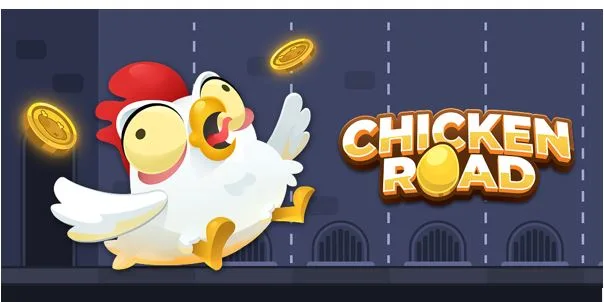The Psychology of Crossing: Why Chicken Road Keeps Players Coming Back
In the fast-paced world of mobile gaming, few titles manage to capture both simplicity and obsession quite like Chicken Road. At first glance, it seems like just another casual crossing game — but within minutes, players find themselves tapping, dodging, and strategizing with laser focus. The Chicken Road game demo, available for free, gives new players a taste of this thrill before diving into the full experience. What starts as a lighthearted challenge quickly turns into a test of reflexes, timing, and mental endurance — a formula that has made Chicken Road a global sensation.
But what exactly makes this game so addictive? Why do players keep coming back, trying again and again to beat their previous best? The answer lies deep in psychological triggers that tap into human motivation, attention, and reward systems. Chicken Road doesn’t just entertain — it subtly trains your brain to crave the next crossing.
1. The Power of Simplicity
The brilliance of Chicken Road lies in its simple mechanics. Tap to move forward, avoid obstacles, and cross safely — that’s all. Yet behind this simplicity lies a perfectly tuned balance between skill and chaos. The player’s mind interprets the game as both easy to understand and difficult to master, creating what psychologists call the “flow state.”
In this state, players are fully absorbed in the task, losing track of time as their focus narrows on each movement. The flow experience releases dopamine, the brain’s “feel-good” chemical, every time a successful crossing occurs. This small burst of satisfaction pushes players to go for “just one more round.”
2. The Reward Loop: Dopamine and Motivation
Every near miss in Chicken Road — when your chicken narrowly escapes a speeding car — gives the brain a mix of stress and relief, heightening the emotional reward. The unpredictability of success keeps players engaged. This is known as variable reward scheduling, a principle often used in both gaming and psychology.
By not rewarding players in a predictable pattern, the game keeps anticipation high. You might make 10 perfect crossings and fail on the 11th, but instead of frustration, the brain focuses on the small victories that felt so good. The desire to relive that micro-moment of success becomes irresistible.
This same mechanism fuels social media scrolling and slot machines — but in Chicken Road, it’s wrapped in fun, harmless gameplay that keeps the mind alert and satisfied.
3. The Risk and Reward Dynamic
At its heart, Chicken Road is a risk management simulation. Every player decision carries weight: should you dash now or wait for the car to pass? Each move involves assessing risk, making quick judgments, and reacting under pressure.
Humans are naturally drawn to risk when it comes with visible, manageable stakes. The fear of losing pushes adrenaline levels up, while the thrill of surviving gives a rewarding rush. The brain interprets this as a miniature survival challenge, and that primal instinct keeps players glued to the screen.
Just like in real life, every small win feels earned — and that emotional payoff makes the next round even more tempting.
4. The Illusion of Control
Another key factor behind Chicken Road’s appeal is the illusion of control. Players believe that success depends purely on their timing and reflexes — and in many ways, it does. But the game’s unpredictable traffic patterns ensure that not every outcome is fully controllable.
This blend of skill and luck triggers a powerful psychological phenomenon. When players feel that their skill influences the outcome, they’re more likely to keep trying even after repeated failures. It’s the same reason why people return to arcade games or sports challenges — the belief that “next time, I’ll get it right.”
Chicken Road perfectly balances this illusion, letting players feel capable while still keeping them humble.
5. Visual and Audio Feedback Loops
Every tap in Chicken Road comes with instant feedback — a satisfying “click,” a swift movement, a visual cue. These small design details activate the reward circuitry in the brain, confirming that the player made a correct decision.
Bright colors, cheerful animations, and upbeat background music also play a major role. The rhythmic sound effects keep the player’s brain engaged in a feedback loop of action and reward. Studies in cognitive science show that when auditory and visual stimuli are synchronized, they enhance learning and reaction speed — both crucial in fast-paced games like Chicken Road.
6. Micro-Goals and Endless Progression
Unlike traditional games with fixed levels, Chicken Road offers endless gameplay. Each crossing is a new micro-goal — and that constant sense of progression prevents boredom. There’s always another road to cross, another score to beat.
This endless format mirrors real-life goals: small, achievable steps that build toward mastery. By keeping objectives incremental, the game satisfies both casual and competitive players. For some, it’s about relaxation; for others, it’s about domination of the leaderboard.
7. Nostalgia and Familiarity
Chicken Road also taps into nostalgia for classic arcade games. Players who grew up with titles like Frogger or Crossy Road instantly recognize the core mechanic — dodging traffic and timing movement. That familiarity provides comfort and connection, even as the game’s modern design keeps it fresh.
The result is a perfect blend of old-school charm and modern execution. It appeals to multiple generations — from kids who love the humor to adults who appreciate the challenge.
8. Social Competition and Sharing
In the digital era, no game becomes truly addictive without a social component. Chicken Road encourages competition among friends, whether through leaderboards or shared screenshots. Players love comparing scores and proving their reflexes are sharper.
This friendly rivalry strengthens engagement. Every time someone beats your score, your motivation to play again increases — reinforcing the psychological loop that keeps Chicken Road thriving.
9. The Science of Short Play Sessions
One of the secrets behind Chicken Road’s long-term success is its short playtime structure. Each round lasts only a few seconds or minutes, making it perfect for quick breaks during the day.
Psychologically, this “low time cost” lowers the barrier to play. Even when players fail, they’re more willing to retry because the investment feels small. Over time, these micro-sessions add up — turning occasional players into loyal fans.
Conclusion: Why Chicken Road Works
At its core, https://chickenroadgame.live/ is a masterpiece of behavioral design. Its mix of simplicity, risk, feedback, and reward creates a cycle that keeps the human brain hooked — not through manipulation, but through perfectly tuned satisfaction loops.
Whether you’re exploring the Chicken Road game demo or competing for the top score, every tap feels meaningful. The game doesn’t rely on flashy graphics or complex rules — just smart psychology, sharp timing, and a dash of humor.
That’s why players across the world keep coming back for “just one more crossing.”





